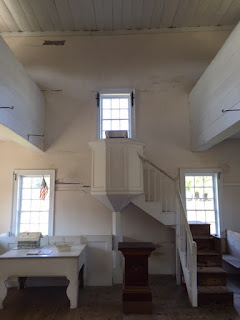Hillman State Park is an oddity. It's technically a "state park," but the name is a little ambitious. Most state parks in Pennsylvania are pretty cool places with camping, hiking, swimming, and at least passingly unspoiled scenery. Hillman is nothing of the sort. This is a vast area of sloppily reclaimed strip mines, and so it's really too strange and barren to qualify as a real state park equal to the others. It's also known as the "Bavington Game Lands," which seems more fitting. Most game lands in the state are second-rate places where the land has been scarred a little too badly to rate state park status.
Hillman is really more of a neglected annex to Raccoon Creek State Park. It's got a token website, but no facilities at all. And it's managed by Raccoon Creek's rangers, who probably have no time for it. I've never once seen any of them patrolling the place. It's got no development of any kind--no parking lots, no restrooms, no water supplies, no picnic areas, beaches, or recreation areas. All it has is an airfield for model airplanes and a tangled labyrinth of unmapped, unmarked trails that wend through a strangely diverse mix of meadows, forests, hills, and hollows.
My tendency in the woods is always to seek high ground in hopes of seeing out over the surrounding countryside. This appears to be one of Hillman's only overlooks. There's a little campsite set up here (though camping is not legal), and a very modest view out over the undulating grasslands and woods. Hillman is usually where I go when I'm bored with Raccoon and don't have the time to drive all the way to the Laurel Highlands. It's only about 35 minutes from the southwest suburbs of Pittsburgh.
I used to get lost every time I came to this place, and I started calling it the Blair Witch Forest. But most of it isn't very forested. The land is largely open, like the moors of western England. The scraggly trees shed their leaves early in the season. This is all due to the fact that the soil is thin and shallow from strip mining.
And yet, it can be a fun place to explore. There are a few places where tall, fragrant evergreens would make you think you were deep in ancient woodlands. One nice thing about the trails at Hillman is that--though they're unmarked, and confusing, and lead through a lot of scrubby countryside--there is always more to be discovered. I can always count on finding something new out here. I've come across at least four ponds, some old farm sites, some nice forestland, and a lot of strange, weedy meadowlands, all crisscrossed by trails for mountainbikers and horseback riders. The trek photographed here is just off Haul Road in the northermost area of the park.


















